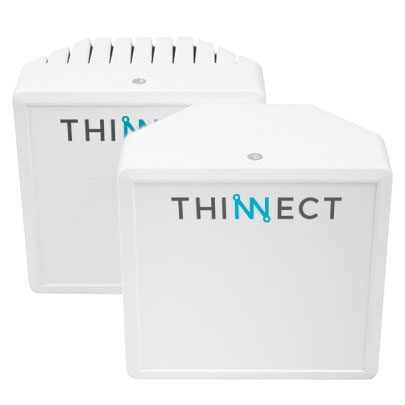An Estonian company has come up with an air quality monitoring solution that can be used to assess indoor air quality and ventilation efficiency in real time, helping evaluate the danger of spreading the novel coronavirus; the solution has now been deployed at a Tallinn school.
The company, Thinnect, says its solution consists of wireless carbon dioxide sensors and a cloud solution that helps the school measure the CO2 concentration in classrooms, providing real-time reports and sending notifications as soon as the reading is outside of the desired range.
The first set of the company’s sensors have now been installed at the Gustav Adolf Grammar School, an elementary and high school in the Estonian capital, Tallinn.
According to Jürgo Preden, the CEO and the founder of Thinnect, various scientific studies have shown that the COVID-19 virus spreads more easily in poorly ventilated rooms as it remains in the room longer as an aerosol.
“Our solution provides the school administration with a real-time overview of the change in the CO2 levels in any room equipped with our sensors and helps assess whether the ventilation system is working with sufficient capacity,” Preden said in a statement.
Mitigating the spread of the virus
“Providing tools to the schools that enable continuous monitoring of air quality in the classrooms helps the personnel to make decisions for improving air quality, thereby mitigating the spread of the virus. If we can slow down the spread of the virus indoors this way, there is also hope that we can reopen schools sooner safely. This means children will not have to stay in distance learning mode for much longer.”

At the Gustav Adolf Grammar School, the company’s sensors collect almost 10,000 readings in a month across the entire building, Thinnect said.
According to the school’s education technologist, Ingrid Maadvere, monitoring the carbon dioxide levels is especially relevant at schools as there is probably no other building where so many changes take place within one room over such a short timeframe.
“At one point, there will be 36 high-school students in the room, which 10 minutes later becomes 15 primary school students, in the same space. Based on the data gathered by Thinnect sensors, we have already increased our ventilation capacity – the technology allows us to quickly assess the air quality of the classrooms and react quickly according to real needs,” Maadvere said.
Modern buildings can be poorly ventilated, too
Poor ventilation of the rooms is best illustrated by the high level of CO2 produced by the air exhaled by people, Thinnect said. “According to research, the CO2 reading above the norm significantly accelerates the spread of the virus through the air. However, volatile aerosols, including virus particles, disperse quickly and do not pollute surfaces if a room is well ventilated,” the company asserted.
“People often believe ventilation is lacking only in older buildings, but, in reality, modern buildings face air quality issues as well – there are cases where ventilation system capacity is not adequate to reduce costs (which results in the system is not being able to provide sufficient exchange of air), the ventilation system has been turned off or adjusted to ‘economy mode’.”

Thinnect is an Estonian internet of things startup that provides solutions like connecting lighting system controllers or environmental sensors into the local network and the internet. The company says its solutions are deployed in Estonia and eight other countries.
The Gustav Adolf Grammar School is a secondary school in Tallinn. Swedish king Gustavus Adolphus established it as the Reval Gymnasium in 1631. It is one of the oldest extant secondary schools in Europe.
Cover: Thinnect has come up with an air quality monitoring solution that can be used to assess indoor air quality and ventilation efficiency in real time.


